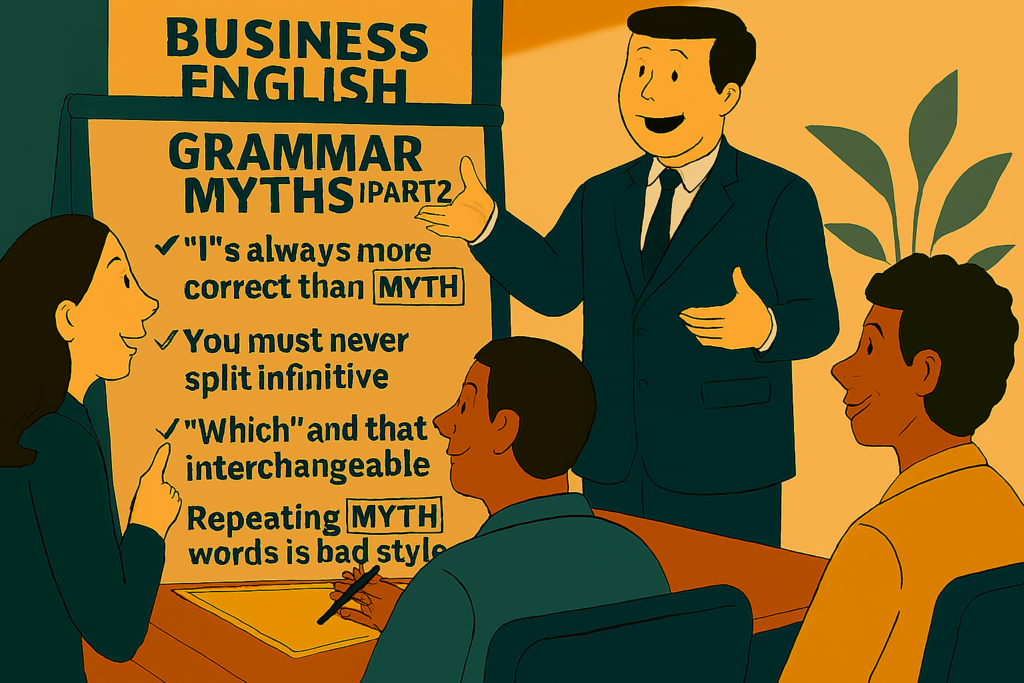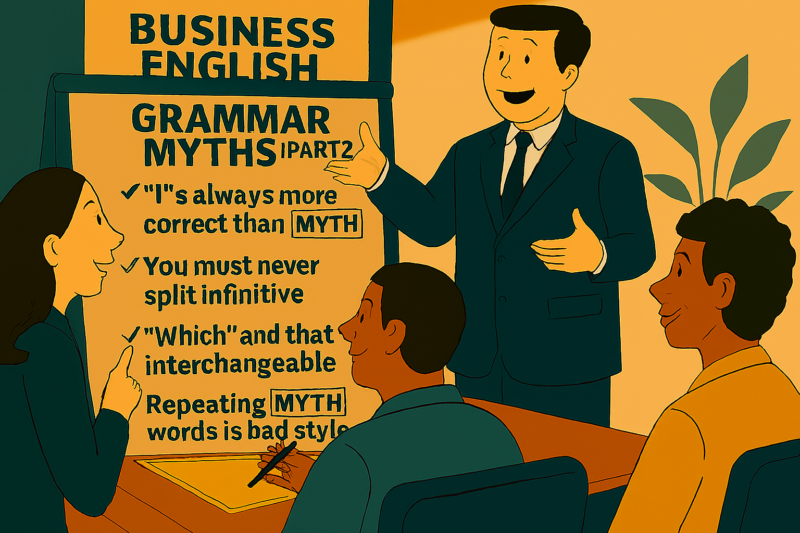
In Part 1, we tackled some of the most common grammar myths—like whether you can start a sentence with And, or end one with a preposition. (Spoiler: you can.)
But there are more. And they’re just as persistent.
Let’s keep going.
Myth 6: “I” is always more correct than “me”
The myth: You should always say “John and I”, never “John and me.”
The truth: It depends on the sentence role. “I” is a subject; “me” is an object.
✅ John and I are presenting tomorrow.
✅ The client met with John and me.
Grammar tip: Remove the other person’s name to check:
I am presenting.
The client met with me.
If it sounds wrong without the other name, it’s probably wrong with it too.
Myth 7: You must never split an infinitive
The myth: You shouldn’t place a word between to and a verb (e.g. to boldly go).
The truth: Splitting infinitives is perfectly acceptable—and often clearer or more natural.
✅ We aim to clearly communicate our goals.
✅ She decided to gradually reduce her hours.
Grammar tip: A split infinitive places an adverb between to and the verb (to clearly communicate). It’s not a mistake—it’s a choice.
Myth 8: “Which” and “that” are interchangeable
The myth: You can use which and that however you like.
The truth: In formal writing, that introduces essential information; which adds extra detail.
✅ The report that she wrote was excellent. (essential)
✅ The report, which she wrote last week, was excellent. (extra info)
Grammar tip: If the sentence still makes sense without the clause, use which (with commas). If not, use that.
Myth 9: You should avoid repeating words
The myth: Repeating words is bad style.
The truth: Repetition can aid clarity—especially in business writing.
✅ Our strategy focuses on growth. Growth in new markets, growth in talent, and growth in innovation.
Grammar tip: Repetition is a rhetorical tool. Use it intentionally to reinforce key ideas.
Myth 10: Longer sentences sound more professional
The myth: Complex, multi-clause sentences show intelligence.
The truth: Long sentences often confuse. Shorter ones are clearer and more impactful.
✅ We reviewed the data. The results were clear. Action is needed.
Grammar tip: Vary your sentence length. Don’t sacrifice clarity for complexity.
So what’s the takeaway?
Grammar myths can make us second-guess ourselves. But when we understand the rules—and when to bend them—we write with more confidence, clarity, and impact.
And that’s what Business English is really about.
Coming up in Part 3:
We’ll look at even more myths—like whether “they” can be singular, if contractions belong in presentations, and why “hopefully” isn’t as wrong as some people think.
Thanks for reading,
Stuart


